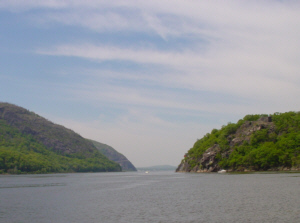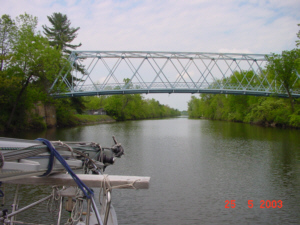News 16
New York City to Quebec City
In the footprints of hunters, warriors and traders
|
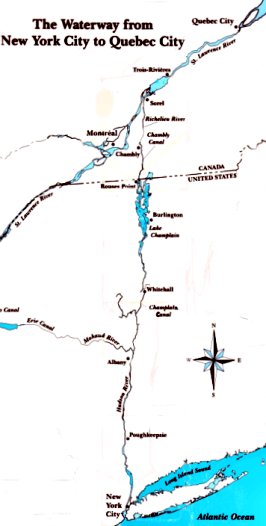 |
|
||||||
Fort Ticonderoga |
The resulting bloodshed was the beginning of the end of those proud nations. Did you read "The Last Mohican" when you were a child, read it again. The Dutch are he first to throw the towel and surrender to the Redcoats. But now the Colonies don't like British Rule anymore and declare their independence, the beginning of the "Revolutionary Wars". Of course, that's what the Americans say, ask a good Tory even today and he still will call them names. |
 |
||||||
 |
On October 11th 1776 the first sea battle in American history takes place on Lake Champlain, which is therefore regarded as the birthplace of the US Navy. Naturally the rebellious amateurs lose, but their learning curve is high and by 1781 the British have to give in. The Colonists become what one of them today calls "the most powerful nation on earth" and the French Canadians stay under British boots. In the 21st century the Queen is still the boss in Canada. |
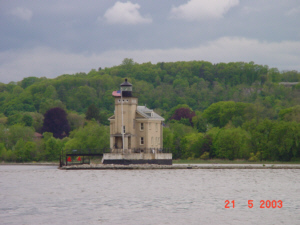 |
||||||
Early 19th century marks the big time for the waterway. Locks, dams and canals are built to enable steamships and barges to go from New York to Montreal and Quebec and back. From North to South it's logs, lumber, pulp and paper, mostly coal from the South on the return trip. The rapid development of a very efficient railway system soon puts an end to the boom years.And the ongoing decay in upstate New York is more than visible. Dying townships all along the way. Beginning in the 70ies of last century the revival of he waterway became a well recognized objective. Millions of dollars were pumped into the restoration of locks, dams and recreational areas. |
 The goode ship "Half Moon" |
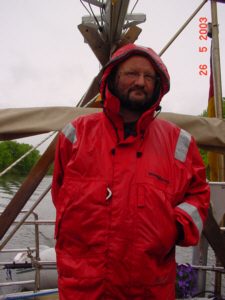 The foulies are getting really popular here |
||||||
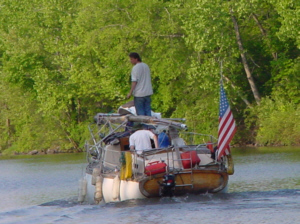 another gipsy boat |
 |
Commercial traffic still exists on the Hudson up to Albany, but the rest is for the pleasure boaters. Especially Parks Canada, which runs the Chambly Canal, is putting a lot of effort into authenticity and attractiveness. The pictures don't really catch the romance of it all, the diversity of landscape, nature and weather. Marshes, mountains, flat dairy farm country and the snow capped Adirondacks in the background, massive ice breaking markers and the occasional gipsy boat northbound like us. In the end we reach the mighty St. Lawrence River and are happy to step our mast again. |
||||||
 solid markers, built to resist heavy ice |
We really enjoyed our sweet water adventure although sometimes we were a bit nervous: the lowest bridge clears 15 ft and our wind generator is 14 ft above the water; fully loaded and in sweet water (!) we draw 5 ½ ft, the controlling depth of the Chambly Canal is 6 ½ ft. Still, it was worth it. At the end of this part of our summer voyage we reach Quebec. The city is a strange mixture of Stockholm and Paris, and, let me tell you, we love it. Sometimes we really miss the Old Continent. At the moment we are trying to find some rest here and in a few days will start preparing for the next big step: the trip to Newfoundland. |
 duck blinds |
 thank heavens, the mast is up again |
 |
 Quebec |
